Hydroponics
Hydroponics is a cultivation system without using soil media.
The medium used in hydroponics is only the liquid medium and the nutrients that are necessary for plant growth.
Planting with hydroponics systems has several advantages.
Hydroponic cultivation can produce large agricultural products with faster periods.
In addition, narrow land is not a problem for hydroponic farming.
The almost non-existent use of pesticides and chemical drugs is a distinct advantage of hydroponic farming.
With hydroponics, plant products can be generated throughout the year and do not depend on the season.
This is because plants that are grown with hydroponic systems grow in closed or protected conditions.
Hydroponic Fodder
Hydroponics can also be applied to produce fodder or animal feed.
The hydroponic fodder system is usually by seeding cereal grains such as barley, wheat, sorghum and corn or legume seeds such as alfalfa.
If in other countries, hydroponic fodder which is usually used is barli grass because it has the highest nutritional content. But did not close the possibility for corn can also be developed.
The hydroponic fodder system consists of shelves that are used to place trays for seed sows.
After the seeds are soaked overnight, the seeds are spread to the tray. During the germination period, the seeds are kept moist but not excessive.
Trays are usually perforated as drainage while watering and providing nutrients is regulated through automatic or manual sprayer.
The seeds for fodder usually begin to germinate within 24 hours and within 5 – 8 days have grown to a height of about 15-20 cm.
After the fodder is taken from the tray, it can be given directly to goats. Goats can eat whole pieces of fodder, both leaves, stems and roots.
Feed fodder is a feed with very little waste. Some goats may not want to eat because they are not used to it. But it can be overcome by getting used to feed the fodder.
The most ideal place to make hydroponics is the greenhouse.
Because with the greenhouse can control the conditions of temperature, light and humidity.
The right environmental conditions are at a temperature of 70 degrees Fahrenheit, 60% moisture and 16 hours of lighting per day.
For this, it is not impossible to make hydroponic fodder requires considerable investment.
How to make hydroponic corn fodder
Simply put, hydroponic fodder can be made with a simple system.
Simple shelves and trays that can be bought on the market. No temperature control, moisture regulator and additional light.
Here are the ways:
1. Wash the corn seeds, remove the floating dirt.
2. Soak with lukewarm water or cold water or water plus microbes 2 cc./ liter of water. choose which one is up.
Soaking for 12 hours and up. (minimum 12 hours).
3. Drain. Then, put it into a dark plastic bag or bucket and close tightly for 12 hours.
4. After exit the root candidate, spread a thin one shaf (do not overlap) and cover with plastic or cloth t-shirts until the leaves will come out.
5. Open the cover and do watering regularly. Watering can use any flush tool.
Can use spray or use scoop. Choose which one is more practical.
Lighter and more practical is to use aquarium pumps. Construction arranged in such a way that water can circulate up and down back and forth, so it can save water.
6. At 6 days of age, hydroponic corn stems usually start red.
Harvesting is done when it meets 10 x the weight of the seed (usually not up to 10x), or the thickness of the roots approximately 5 cm.
Or up to you, depending on your wishes.
7. Before being given to livestock, the hydroponic corn fodder is aerated to allow roots to dry from water, not dry in the sun.
The feed of the hydroponic corn Fodder is still young and fresh commensurate with fresh grass.
Therefore, hydroponic fodder feed usually has a high degree of palatibility.
The difficulty in developing hydroponic fodder in Indonesia is a tropical climate, so it is easy for the development of mushrooms.
Below is a picture of the hydroponic corn fodder I’ve tried to do.
Regarding the imperfection of the hydroponic corn above , it is because there are some constraints. These obstacles I write at the end of this post.
The nutritional content of hydroponic corn fodder
The seeds of fodder that germinate will change the nutritional content. Enzymes that work during germination will change the complex substances to be simpler.
For example, starch substances will be converted into simple sugars, proteins into amino acids, and fat converted into fatty acids.
Hydroponic fodder also reduces the amount of anti-nutritional substances such as phitic acid.
The feed of hydroponic fodder decreases the total amount of energy.
The increased percentage of protein amounts results in the loss of dry matter fodder.
The feed of hydroponic fodder has a high water content. According to reports of animal feed analysis, feed of hydroponic fodder contains dry matter between 12-15%.
The amount of the dry matter if the remaining corn seeds are not counted.
In fact, if harvesting is only in the age of 8 – 10 days, in the hydroponic corn fodder, there are still corn seeds. Although the shape is not complete anymore.
The amount of dry matter is very small when compared to the amount of dry matter of corn kernels which is almost 90%.
In essence, hydroponic corn fodder does have a higher nutrient content than corn kernels.
In the next section of this article, we can see how the nutritional content of this hydroponic corn fodder.
In comparison, we must know how the nutrient content of the corn kernels themselves.
So we can later find differences in nutritional content between corn kernels and hydroponic corn fodder.
The nutritional content of corn kernels is as follows. [1]
|
Nutritional contents of corn kernels (% dry weight) |
|
|
dry matter |
89,97 |
|
ash |
1,65 |
|
Crude protein |
10,69 |
|
Crude fiber |
1,29 |
|
Fat |
3,11 |
|
BETN |
83,25 |
Fodder hydroponic corn expensive or cheap?
If the water content in the hydroponic fodder feed is ignored, the cost of hydroponic fodder feed is very cheap.
For example, per KG of corn seeds cost is IDR 3000. After becoming 10 kg fodder, then per kg of feed of hydroponic fodder the cost is IDR300.
This calculation as if feeding hydroponic fodder could be a solution to provide cheap goat feed.
However, it seems very difficult to achieve fresh weight of corn fodder up to 10 times.
Moreover, the harvest of hydroponic corn fodder is done at the age of 8 – 10 days.
From several sources of literature, forage production from corn fodder is only ranged between 2-3 times.
However, if the fodder is converted to dry matter, the feed of this hydroponic fodder is very expensive.
With dry weight of 12%, then from 10 kg feed of hiroponic fodder there is only 1.2 kg dry material.
The cost per kg of dry matter is almost equal to the price of the beans. Not including extra power for the treatment of hydroponic fodder.
So, actually the cost of hydroponic fodder feed is the same as the price in general, for example hay corn or corn silage.
Not to mention, if the production of hydroponic fodder can not reach 10 x fold from the fodder seed.
Efforts to maximize the production of hydroponic corn fodder
As much as the desired result in planting hydroponic corn?
Things that might be attempted is to give fertilizer. Fertilizer that can be used is hydroponic fertilizer or other fertilizer.
In addition to using fertilizer, can regulate the density of seeds. Seeds that are too dense will cause the seeds to accumulate and the result will not be maximal.
But is it all effective? Can hydroponic fodder production be more?
We will look at some of the following studies.
Using fertilizer on hydroponic corn fodder [1]
In this research, the fertilizer used is AB-Mix fertilizer and bioslurry. Bioslurry is a waste of sludge from biogas processing.
The easy explanation of this bioslurry is like this.
You must have heard about making biogas from cows manure.
To get this biogas, cow manure is mixed with water and then inserted into a reactor or a container.
The result of making this biogas there are two kinds. The first is a gas and the second is a mixture of cow dung and water in the reactor.
A mixture of cow dung and water that had not produced the gas, called bioslurry.
Bioslurry is then filtered several times to be taken the liquid part only.
AB mix is a commercial hydroponics fertilizer whose ingredients are as follows.[2]
| Solution A | |
| Calcium nitrate | |
| Potassium nitrate | |
| Fe EDTA | |
| —————————————————– | |
| Solution B | Potassium dihydro Phosphate |
| Amnonium Sulphate | |
| Magnesium Sulphate | |
| Cupri sulphate | |
| Zinc Sulfate | |
| Boric Acid | |
| Manganese Sulphate | |
| Ammonium hepta Molybdate | |
In addition to using fertilizer, hydroponic fodder also wants to know the production of seed density.
The best results of hydroponic corn production from the study were with seed densities of 3.5 kg per square meter and bioslurry fertilizer 25% + AB-mix 75%.
In short, the results can be seen in the table below.
This hydroponic corn is harvested at 8 days.
| Parameter | Amount |
| Height (cm) |
24,9 |
| Fresh Weight (grams/tray) |
929,33 |
| Fresh Weight (per kg of seeds) |
2655,24 |
| Dry matter (grams) |
215,13 |
| Water content (%) |
69,8 |
| Ash (%DM) |
5,99 |
| Crude Protein (% DM) |
13,97 |
| Crude Fiber (%DM) |
5,54 |
| Fat (%DM) |
4,47 |
| BETN (%DM) |
70,03 |
| Digestibility of Dry Matter |
84,62 |
If you feel the hassle if you want to use bioslurry, then you can use AB-mix fertilizer only.
Still in the same study, the results of hydroponic corn by using AB-mix fertilizer is as in the table below.
The contents of the table I added with a density of 3 kg per square meter and 3.5 kg per square meter.
The purpose of this density is this.
If the tray that will be used use the size is 50 cm x 50 cm, then per square meter need 4 trays.
So, for a density of 3 kg/m-2, 1 kg of corn seed is divided 4. Similarly for a density of 3.5 kg/m-2.
|
Parameter |
Density |
|
| 3 kg/m-2 | 3,5 kg/m-2 | |
| Height (cm) |
28,37 |
28,8 |
| Fresh Weight (grams/tray) |
674 |
923,33 |
| Fresh Weight (per kg of seeds) |
2246,67 |
2639,05 |
| Dry matter (grams) |
198,98 |
227,19 |
| Water content (%) |
74,94 |
75,45 |
| Ash (%DM) |
7,93 |
5,11 |
| Crude Protein (% DM) |
14,09 |
14,57 |
| Crude Fiber (%DM) |
3,92 |
5,39 |
| Fat (%DM) |
5,4 |
4,7 |
| BETN (%DM) |
68,66 |
70,23 |
| Digestibility of Dry Matter |
77,51 |
74,28 |
Obstacles in making hydroponic corn
If you want to make corn fodder for animal feed, you should prepare the energy and extra time.
This is because many obstacles are likely to be and should be overcome.
According to my analysis, the obstacles are like this:
First.
The forage production of the hydroponic corn fodder is stuck between 2-3 times the seed.
This is if the fodder is harvested at the age of 8 – 10 days after germination.
Because at that age, corn growth is still taking food sources from seeds.
This means not taking nutrients from outside sources, such as fertilizer.
Fertilizing will not provide a fantastic production increase.
Just a little more.
If you expect more forage production, then the fodder should be harvested at a longer age. A month for example.
But if a month, yes, should not be grown by hydroponic way. On the ground even the results are better.
The advantage is that hydroponics can be planted in a vertical or upward way.
Hence, on the above I say prepare the energy and more time.
Second.
To get a seed with a high germination rate is quite difficult.
We can not use corn seeds that are expensive just to make fodder.
Most likely we get corn seeds from poultry whose corn kernels are intended to be direct feed. That is, the quality of seeds does not meet the stantard for planting.
Indeed, there is an effort to maximize the seeds that germinate optimally.
Among them is to soak the seeds into the water then throw away the seeds that float and rot.
In addition, there are soaked seeds with hypocloritic fluid. The goal is to remove the fungus on the seeds.
Thus, the seeds during germination proser are not overgrown with mushrooms.
Once soaked, in order to quickly germinate, the corn kernels are covered with an opaque cover. Can use mulch plastic, cotton cloth or sponge.
Then, how efficient is this step?
Regarding this, from the research conducted, the highest germination rate was only 68.89%. [2]
That is, although already in the selection manually, there are still about 30% of corn seeds are likely to not grow.
Third.
Seeds that do not grow have a high risk of moldy.
Why can it be high?
Corn seeds in damp conditions even wet for 8 days in a row, what is not high risk overgrown with mushrooms?
Moreover, if the corn seeds rotten. If it gets rotten, there is a harmful microorganism that may be very harmful.
I think these three things become important points to consider.
But if you believe you can overcome these three things, then the hydroponic corn fodder continues.
Without these three things, hydroponic corn for animal feed is very good and very good nutritional content.
Thank you very much.
Reference
[1] Melisa, Dara. 2014. Evaluation of Production and Nutritional Quality Corn (Zea mays L.) Forage of Hydroponics Cultivation. Department of Nutrition Science and Feed Technology Faculty of Animal Husbandry IPB Bogor [ID].
[2] Prihartini, Rini. 2014. Hydroponic Fodder for as an Feeding Alternatives to Meet Shortage of forage for Dairy Cattle During Dry Season. Department of Nutrition Science and Feed Technology Faculty of Animal Husbandry IPB Bogor [ID].
 JOYNIM FARM Goat Farming, Cattle Farm, Laying Hens, Quail Farm, Gardening
JOYNIM FARM Goat Farming, Cattle Farm, Laying Hens, Quail Farm, Gardening
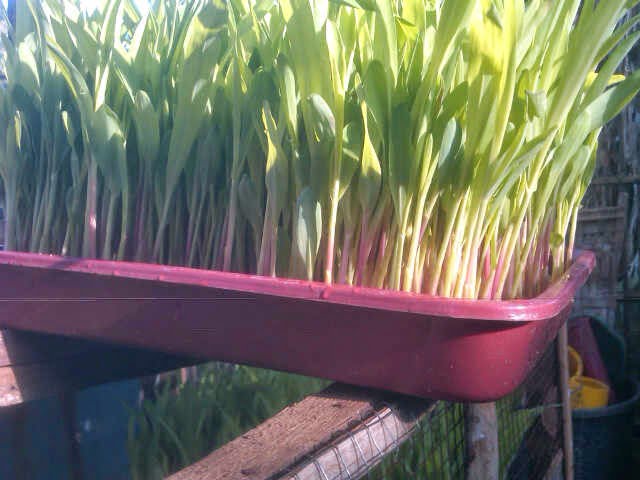
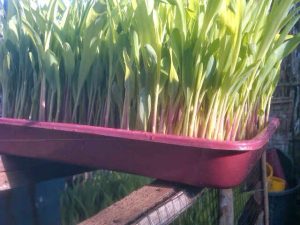
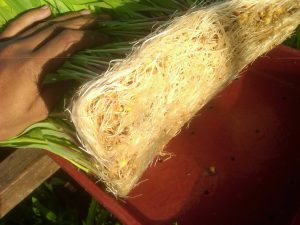
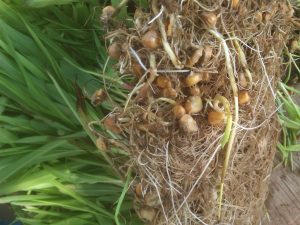
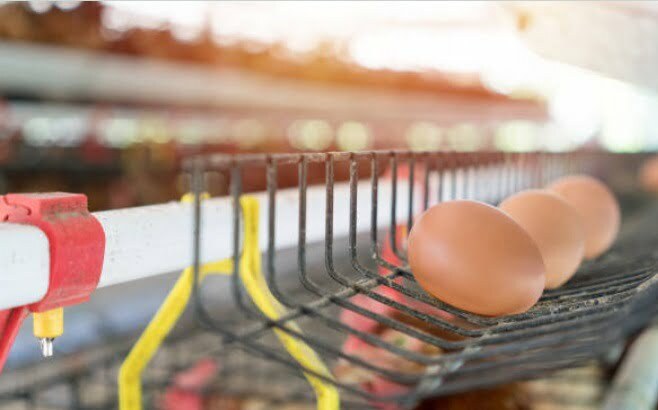

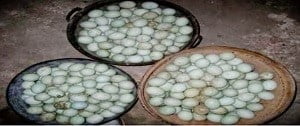
you can email me at joyosulistyo.r@gmail.com
Hi im from to iran .iwill taken to hidroponic fooder
I need the counsul, please
Hi, very nice and informative. Thank you. Help you find out what kind of nutrients you need to grow to produce hydroponic feed